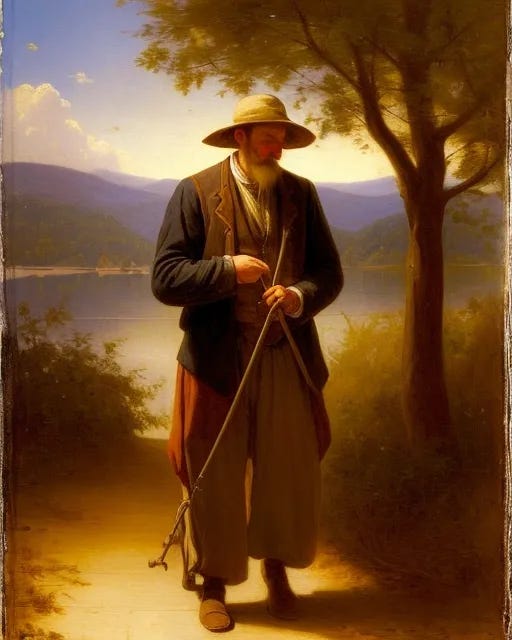
Understanding the planets is the key to understanding astrology. Though signs get a lot of attention in our current culture, they really get their power and attributes from the planets that rule them, fuel them, shape them. I wrote my series on Embodying the Planets to help people bring that information into their bodies through ritual activities and what I saw as the most important attributes of each planet.
If you don’t know the basic attributes of the 7 visible planets, start there:
But here’s the thing: in charts and in our lives, planets rarely show up by themselves. A rose, for example, may be of the nature of Venus for its color, smell and association with love buts its thorns are of the nature of Mars. You may have a really sweet Cancer Moon, natally or by transit, but if it’s opposed by Saturn, you can’t get the nurturing, protecting qualities of Luna without the scarcity and struggle of Saturn.
Again and again in client consults, I find that by solely talking about the planetary combinations in someone’s chart, you can get to the heart of the foundational dynamics of their heart. And if you start looking around, you see planetary duos, specifically between two planets, show up all over astrology. Lots, or calculated points of fate, are determined via the relationship between two planets in your chart. Signs are defined by both their domicile and exaltation rulers. All fixed stars are assigned a planetary duo that reflects their nature.
By beginning to understand what it means when two planets come together, you see the relationships between them and the common ways they manifest in our mixed-up, varied lives.
In our charts, a planet is considered in combination with another when they are in the same sign, in opposing signs, or in mutual reception (a swapping of rulerships, i.e. when the Moon is in Leo and the Sun is in Cancer. Terms, exaltations and decans count here too).
So today, I begin a series exploring these planetary combinations in part because I find them so interesting. This work is heavily inspired by Austin Coppock’s “36 Dramas: Essential Planetary Relationships” Lecture from NORWAC 2022, so please check that out if you want to learn more! Going beyond his wonderful starting point, I will also include information on the decans, each of which have two planetary rulers when you consider both the Chaldean and Triplicity system, as their dynamics do a great job demonstrating what the planetary combinations look like in action. We will also be examining the fixed stars that share the same nature as this planetary combination to further our understanding.
Other uses for these combinations:
understanding mixed planetary correspondences
determining which herbs may help you if they have more than one ruler
connecting with your holy guardian angel (who is classically of the nature of two planets)
seeing your chart more clearly
attuning yourself to both planetary days and hours
P.S. If you want help understanding your own planetary combinations, my books are open for October! I will have limited spaces, as I will be away for part of it, so book now to reacquaint yourself with your magic and destiny (no big deal).
Saturn and Jupiter: Summary
We are beginning with Saturn and Jupiter because these are the two slowest-moving planets. Their alignment happen infrequently and for a longer time than the other planetary joinings so major aspects between them are used in mundane astrology to mark epochs and eras of history. If you have heard that we are in an “Age of Air,” currently, that comes from the shifting alignments between these two planets.
Both, accordingly, have to do with larger structures and our place within them. Both are diurnal, of the day sect, so have to do with daytime activities: commerce, career, public displays, politics, etc. But while Jupiter is the Greater Benefic, bringing outsize good things, Saturn, the Greater Malefic, brings great difficulty. Jupiter is warm and wet, conducive of life and growth, and Saturn is extremely cold and dry, conditions for the cessation of life.
Thusly, when these two are in combination, you get a grand mixed bag of flow and its stoppage; freedom and limitation. In Vedic astrology, any combination of the two is called “Brahma Yoga,” named after their creator god known for being imperfect, just like his creations.1 A word Coppock uses for this duo in his lecture is “stewardship”; the concept of having both power and responsibility over a specific tradition, lineage, piece of land, organization, etc. What immediately comes to mind for me is the Denkoroku, or the Transmission of Light, a koan text in the Zen tradition that tells the enlightenment story of each ancestor stretching all the way back to the Buddha in an unbroken chain. Each morning at virtually any Zen center, you will chant the 80-plus names of these ancestors to connect yourself to the lineage of enlightenment but also to highlight the duty that comes with passing the light of the dharma onto future generations.
Keep reading with a 7-day free trial
Subscribe to Recent Bedroom to keep reading this post and get 7 days of free access to the full post archives.



